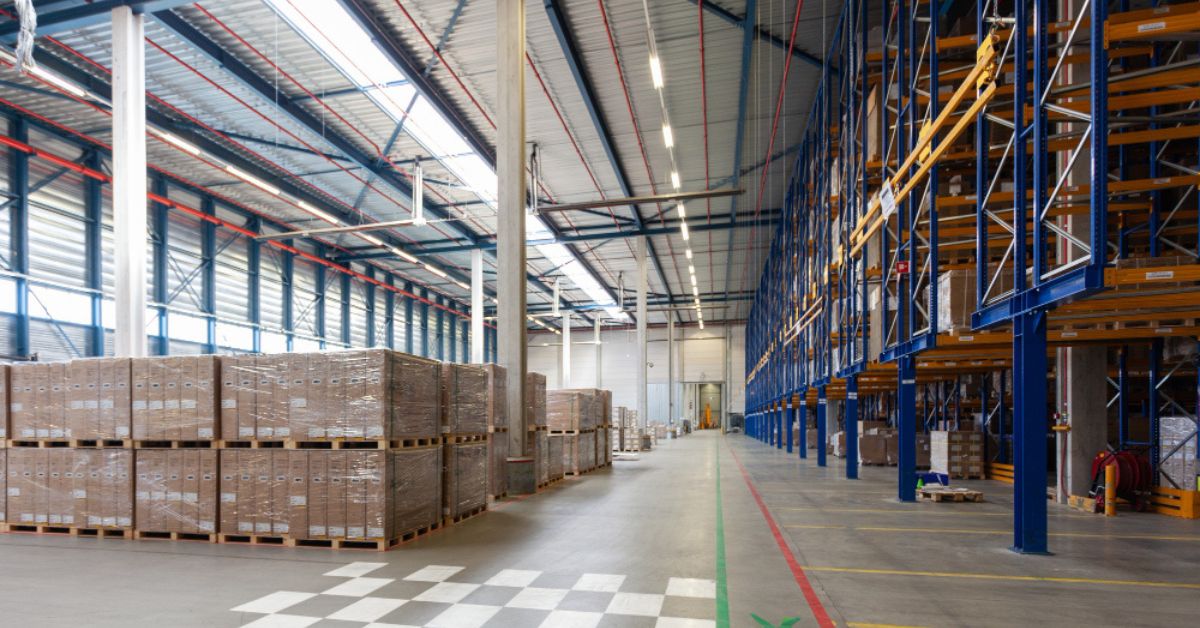The Future of Warehousing: Delhi’s Role in Global Supply Chains

India’s warehousing industry has seen rapid growth in recent years, driven by economic development, foreign investments, and the rise of e-commerce. Delhi, as the capital and a major commercial hub, has emerged as a key warehousing cluster catering to northern India. With its strategic location, connectivity to ports and consumption centers, and availability of land, Delhi is poised to play an important role in global supply chains.
Emergence of Grade A Warehousing
Delhi NCR region has witnessed increased development of grade A warehousing spaces lately. These modern warehouses are large, mechanized facilities meeting global standards in terms of design, technology, and sustainability. They provide amenities like automation, racking systems, CCTV surveillance, access control, fire safety and environmental controls.
The rise of grade A warehouses indicates India’s capability to cater to international companies for storing goods and cargo. It also shows consciousness towards quality parameters in the logistics industry. This has enhanced India’s position in global supply chains with Delhi as a focal point.
Impact of Government Initiatives
The Delhi government has taken notable policy initiatives to boost warehousing, transportation and freight ecosystem. Efforts are being made to identify land parcels for setting up logistic hubs and parks in public-private partnership models. With quality infrastructure and seamless connectivity, it aims to develop Delhi as a strategic cargo hub for northern India.
Initiatives like direct port delivery, Direct Port Entry and radio-frequency identification have improved efficiency in cargo handling. Thrust on multi-modal logistics parks have also enabled freight movement through rail, road and inland waterways. Such reforms have facilitated trade flows with Delhi as an emerging gateway to global supply networks.
Technology Use in Warehousing
Sophisticated technology is steering innovation in Delhi’s warehouses, helping them get deeply integrated in global supply chains. Automated storage and retrieval systems allow faster processing. Digital tools like warehouse management systems, IoT and analytics enable tracking inventory, optimizing space, coordinating workforce, and monitoring equipment in real-time.
With technology, warehouses can share information seamlessly with suppliers, transporters, distributors using cloud computing and data exchange platforms. This is facilitating a transparent, efficient system connecting Delhi’s warehouses with global endpoints. AI-powered robots are also enhancing productivity in material handling and inventory controls.
Delhi’s Diverse Storage Challenges:
Limited Space:
One of the primary hurdles in Delhi’s warehouse landscape is the scarcity of space. With the city’s burgeoning population and the ever-increasing demand for storage, businesses often find themselves struggling to secure adequate square footage for their warehousing needs. This scarcity drives up costs and poses logistical challenges for inventory management.
Infrastructure Bottlenecks:
Delhi’s infrastructure, while rapidly developing, still grapples with bottlenecks that affect the smooth functioning of warehouse operations. Traffic congestion and inadequate transportation facilities can lead to delays in the transportation of goods, impacting overall supply chain efficiency.
Regulatory Compliance:
Navigating the regulatory landscape is another significant challenge for warehouses in Delhi. Adhering to safety standards, environmental regulations, and other legal requirements adds an extra layer of complexity to warehouse management. Failure to comply can result in fines and operational disruptions.
Key Challenges Ahead
While Delhi’s future seems promising as a strategic warehousing hub, significant challenges remain regarding land availability, manpower, sustainability standards and technology use by small-scale providers.
As mega-warehouses crop up on the outskirts lacking transportation links, integrating cargo flow with the city remains difficult. Environmental standards also need due consideration given water scarcity and air pollution concerns.
There is a severe crunch of skilled workforce in the logistics industry too. For global integration, extensive training in technical know-how and compliance is still required. Addressing these barriers will be key.
Future Opportunities
Notwithstanding the challenges, Delhi presents exceptional prospects for supply chain companies. Delhi’s location near ports and consumption markets is an asset. With the likely shift of manufacturing away from China, India can position itself as an alternative global factory with Delhi as the epicenter.
There are estimates of tremendous growth in e-commerce and third-party logistics in India. As multinationals expand operation, demand for efficient warehousing will exponentially increase. There is potential for trans-shipment cargo also tapping Delhi’s connectivity.
Thus while firmly establishing its position in domestic distribution, Delhi can elevate itself further to become a strategic regional distribution center with efficient links across global supply and value networks.





